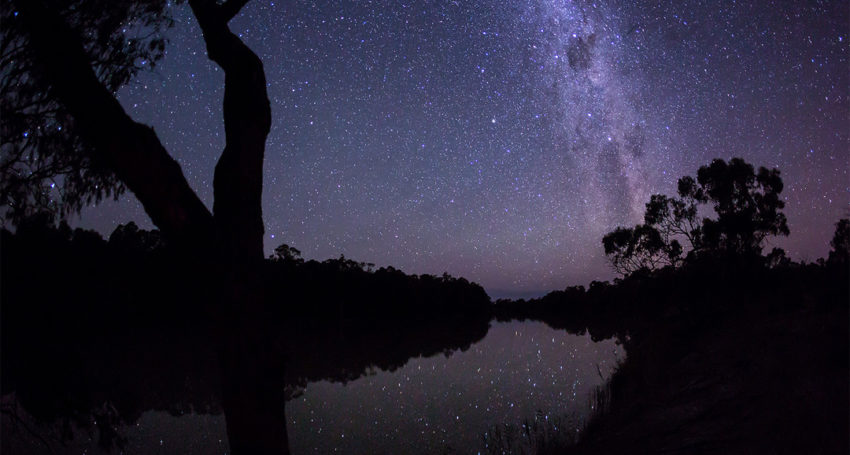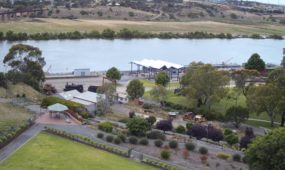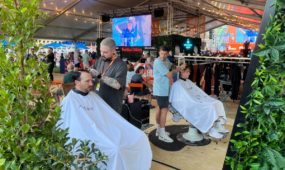Stars align to drive tourism
Tourism
AN Australian state known for its pristine environment and natural beauty is turning its attention to the night sky to lure star-struck visitors.

Sign up to receive notifications about new stories in this category.
Thank you for subscribing to story notifications.

Environmentalists and astronomers are working up a case to have a vast tract of land just 120km from the South Australian capital Adelaide declared a Dark Sky Reserve.
If successful, the 2000sq km River Murray Dark Sky Reserve would become just the second officially sanctioned International Dark Sky Place in Australia and the fifth in the Southern Hemisphere. More stars – including a better view of the Milky Way – can be seen in the southern skies than in the Northern Hemisphere.
The area’s sparse population, starry skies and clear nights have inspired the Mid-Murray Landcare Group to apply to the International Dark-Sky Association (IDA) in conjunction with Mid-Murray Council and the Astronomical Society of South Australia.
Light is measured on a scale of 0-22, where 22 is total darkness. Testing at the South Australian site, which is shadowed from the lights of Adelaide and the Barossa Valley by the Mount Lofty Ranges has so far returned results of up to 21.9.
Mid-Murray Landcare Acting Chairman Chris Tugwell said while there were probably darker places in Australia in remote Outback areas, the site’s location near existing tourist attractions such as the River Murray and within a 90-minute easy drive of a major city made it an ideal tourist destination.
“The advantage we have is that we are really close to Adelaide and because of the shading from the Mount Lofty Ranges it is actually incredibly dark,” he said.
“The sky is also very clear so it makes it a very good place for people to set up telescopes and look at the sky.
“It’s sort of like World Heritage listing for the night sky and anyone who lives out there knows how incredible it is so we’re just trying to take advantage of that.”

The night sky near Sedan, within the proposed Dark Sky Reserve. Picture: Andrew Cool.
South Australia is known for its natural beauty and clean fresh food and wine. It includes areas such as Kangaroo Island, Flinders Ranges, Port Lincoln, Barossa Valley and the River Murray, Australia’s largest river system.
Tugwell said the reserve location between the small River Murray towns of Mannum and Blanchetown included a mix of private property, conservation parks and national parks, some of which already catered for visitors because of their proximity to the river. He said it was hoped the reserve would become a tourism drawcard, particularly with tourists from Asia.
“We’re hoping to set up a Dark Sky Trail for visiting astronomers to let them know about specific places within the reserve where they can set up easily and camp or hire a houseboat,” he said.
“We’ve already had several conversations with local people who want to set up Dark Sky places on their properties so visitors can stay in places that they wouldn’t otherwise get to see.”
Tugwell is preparing the application to lodge with the IDA in September. He said he hoped to have some preliminary recognition before the end of the year.
“Light pollution is a real problem around the world and there are cities in the northern hemisphere where you can’t see any stars at all – so there are people who have never seen the stars and we’re hoping that some of them will come down here to have a look at ours.”
An International Dark Sky Reserve can be on public or private land and must possess an exceptional or distinguished quality of starry nights and nocturnal environment that is specifically protected for its scientific, natural, educational, cultural, heritage and/or public enjoyment.
The bulk of the 37 Dark Sky parks, reserves, sanctuaries and communities are in North America and Europe. Warrumbungle National Park in New South Wales was last year declared Australia’s first Dark Sky Park. However, its location 500km northwest of Sydney makes for a long six-hour journey by car.
Astronomical Society of South Australia light pollution officer Martin Lewicki said the measurements taken so far compared favourably with some of the darkest sites around the world.
He said the area was also anecdotally known for its clear skies.
“They say the stars are so close you can touch them,” Lewicki, who also works as the educator at the Adelaide Planetarium, said.
“You can see between 2000 and 3000 stars – in the city you are lucky if you can see 200-300 stars with the naked eye.
“We want to attract the attention of people who want to get away from the bright lights and noise of the city and actually appreciate the universe in all its splendour – especially our wonderful southern sky which has more stars than the Northern Hemisphere.
“It could become a place where people come to see a protected night sky with light pollution controls to safeguard it for future generations without having to travel hundreds of kilometres into the Outback.”
Jump to next article



